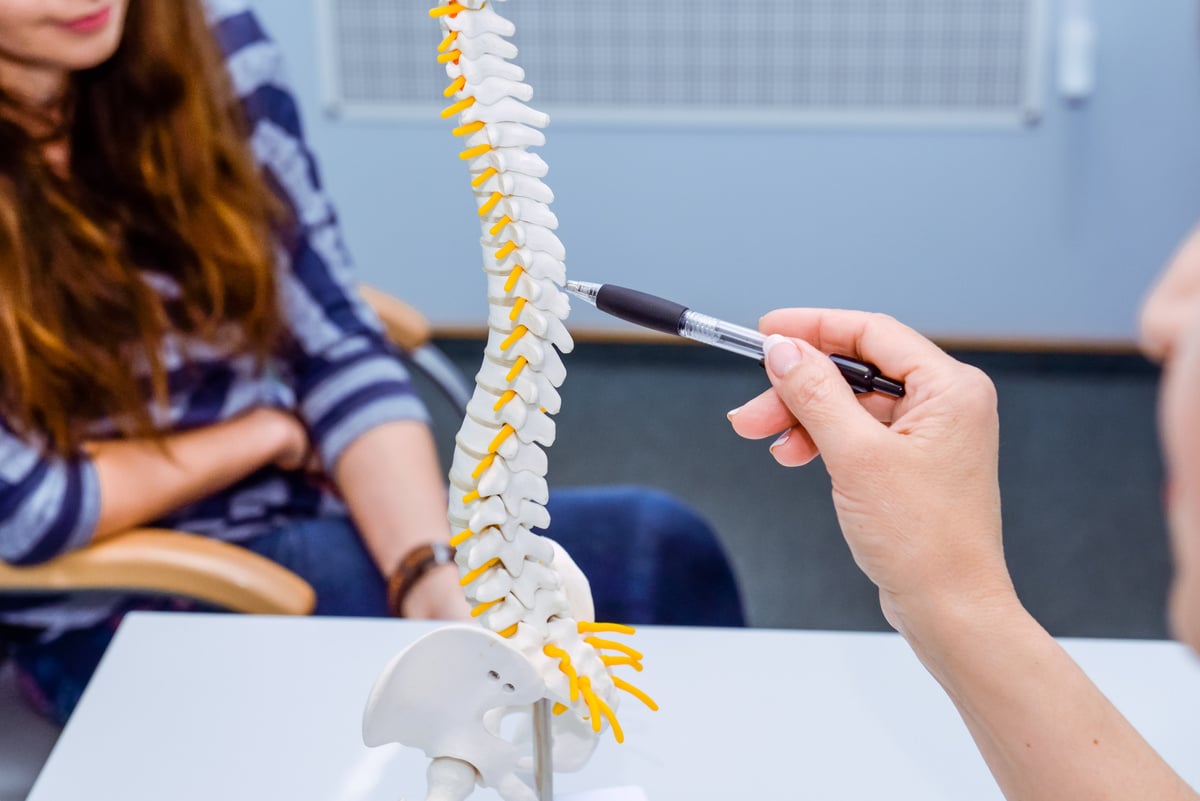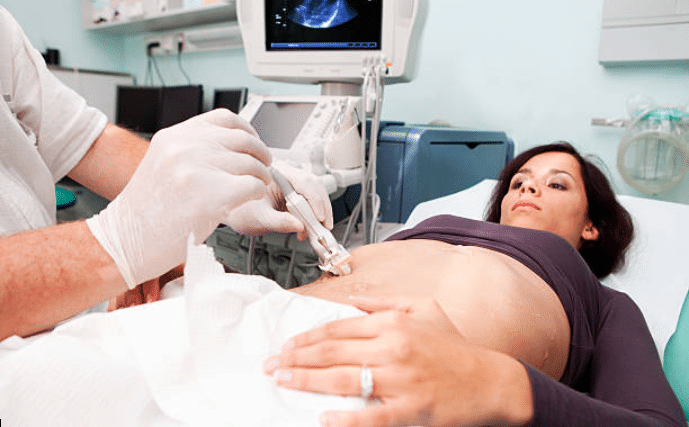Back pain problems are the most complaints of people of all ages. The work-from-home setting, improper activity execution, prolonged sitting, and standing can contribute to various spine injuries.
These situations may warrant a visit to a pain management clinic. Immediate consultation, diagnosis, and interventions are necessary to repair herniated discs, nerve impingements, bone degenerations, and prevent worsening conditions.
Anatomy Background
Vertebral Column
The vertebral column is the body’s central support and axis. It is the pillar that holds the head, hips, arms, and ribs. Also known as the spinal column, it houses the spinal cord, the conduit of stimulus and information between the brain and body.
It is composed of:
- 33 vertebrae:
- Seven cervical or neck
- Twelve thoracics or chest
- Five lumbar or lower back
- Five sacral or posterior pelvic girdles (fused to form the sacrum)
- Four coccygeal or tail bones (the lower three are commonly fused)
- 23 intervertebral discs (IV discs)
- There are six IV discs in the neck, twelve in the middle back, and five in the lower back. They serve as a cushion between two vertebrae to absorb shock, pressure, allow flexible movements, and prevent the grinding of the bones.
Two significant compositions:
- The Nucleus Pulposus is the central gelatinous, pulpy material that allows compression and torsion in all directions
- The Annulus Fibrosus is the outer rim of dense fibrocartilage
The IV discs of the neck and lower back region are thicker due to their more frequent mobility compared to the chest and pelvic girdle area. They may become less resilient with age, injury, or improper use, resulting in a weakened annulus fibrosus.
The functional unit of the spinal column is a combination of one intervertebral disk and two adjacent vertebral bones. They are supported with trunk musculature and several strongest ligaments of the body.

Common Causes of Back Pain Problems
- Herniated Disks refer to a change in the shape of the annulus fibrosus, which causes it to bulge beyond its normal parameter. Wear and tear or an injury cause the inner nucleus pulposus to push against its outer ring.
There are four classifications:
- Protrusion – the nuclear material is contained by the outer layers in the annulus fibrosus and supporting ligamentous structures
- Prolapse – there is rupture of the nuclear material into the vertebral canal
- Extrusion – is the IV disc bulging and extension over the posterior longitudinal ligament (PLL)or above and below the disc space
- Free Sequestration – the extruded nucleus gas separated from the disc and moved away from the prolapsed area
Potential causes:
- Fatigue breakdown – results from repeated overloading of the spine in flexion with asymmetrical forwarding bending and torsional stresses.
- Traumatic breakdown – it is most commonly seen in traumatic over-bending injuries. There is a one-time rupture of the annulus fibrosus, which results in a gradual deterioration over time.
- Compression – also known as axial overload, results in endplate damage or vertebral body fracture.
Herniated discs symptoms, especially pain, depend on the intervertebral discs’ type and degree of damage. They commonly manifest as pain on bending and exertion. Early diagnosis is a must to prevent progressive fibrous change, decrease in water content, and nucleus size.
- Sciatica occurs when a nerve root is impinged or irritated, it leads to pain, weakness, and numbness in one or both legs. The pain radiates along with the innervated areas of the sciatic nerve.
- Discitis refers to an inflammation of the IV discs and spine. There is a swelling in the spaces between them, leading to disc compression and elicitation of pain. This condition can be caused by bacteria, fungus, or viruses.
- Lumbar Spinal Stenosis (LSS) occurs when there is diminishing space in the spinal canal due to degenerative changes. It is mainly related to aging.
Evaluation of Patient
A thorough patient evaluation in a pain management clinic is needed to attain a precise diagnosis. Here are the following:
- Patient history
- Chief complaints
- Familial history
- Past medical/surgical history
- Current ailments/comorbidities
- Current medications
- Psychological history
- Home and occupation setting
- Pain Scale
- Observation and Inspection
- Palpation
- Asymmetry of muscle tissues and bony protuberances
- Tissue Texture
- Physical therapy special tests
- Range of Motion (ROM) of the back
- Muscle strength of the back
- Gait analysis observation
- Dermatomes, Myotomes and Reflexes
- Spine active movements
- Standing, sitting, and prone assessments
- Leg length measurement and feet alignment
- Diagnostic Testing
- Magnetic Resonance Imaging (MRI)
- CT Scan
- X-ray
- SPECT
- Bone Scan
- Discogram
- Myelogram
- Blood tests
Ways That Resolve Back Pain Problems
After patient evaluation, proper interventions are implemented to resolve back pain problems. The interventions vary from type, degree, and severity of back problems.
Here are the following:
- Patient Education
This approach is often underrated. Proper patient education is needed to ensure that the patient incorporates adequate techniques to treat and prevent worsening of the condition, especially outside the clinic. The patient must engage in self-management activities and precautions.
- Physical Modalities
Interventions such as ice massage, hot packs, deep heating, transcutaneous electrical nerve stimulation (TENS), acupuncture, ultrasound (US), traction machine, and shockwave therapy (SWT) can help to relieve, if not eliminate, pain. There are non-surgical methods, like Schroth method scoliosis, that are very effective.
- Manual Therapy
Spray and stretch techniques, self-stretching, joint mobilization, and manipulation are needed to lengthen, strengthen, and prevent a decrease in muscle mass. It also helps decrease acute symptoms such as pain in prolonged static postures.
- Teach proper and safe performance of basic activities of the daily living (ADL)
Kinesthetic training is needed to re-educate the patient of the proper ways how to move safely and efficiently. Most back problems are due to improper muscles in lifting, carrying, bending, even in prolonged sitting and standing.
The medical professional will teach the patient neck and shoulder motions, pelvic tilts, and proper postures. Passive support and bracing are provided if necessary. The patient should practice safe positions and movements to ensure the safety of the spine.
- Exercises
The level and intensity of exercises depend on patient tolerance and progression. Low to moderate aerobic exercises, hip and spinal mobility exercises, standing overhead reach, McKenzie exercise, abdominal strengthening, and stabilization exercises are implemented to regain back control and mobility.
Final Word
Back pain problems are common nowadays. It is essential to seek consultation in a pain management clinic right away in these situations. Delay in diagnosis and treatments may result in incapacitating pain and prevent you from performing daily activities efficiently.
Whether you have a passive or active lifestyle, you are prone to acquiring herniated discs that may result in severe conditions such as sciatica. Exercises in the clinic and home are highly recommended to strengthen and alleviate back pain problems.











